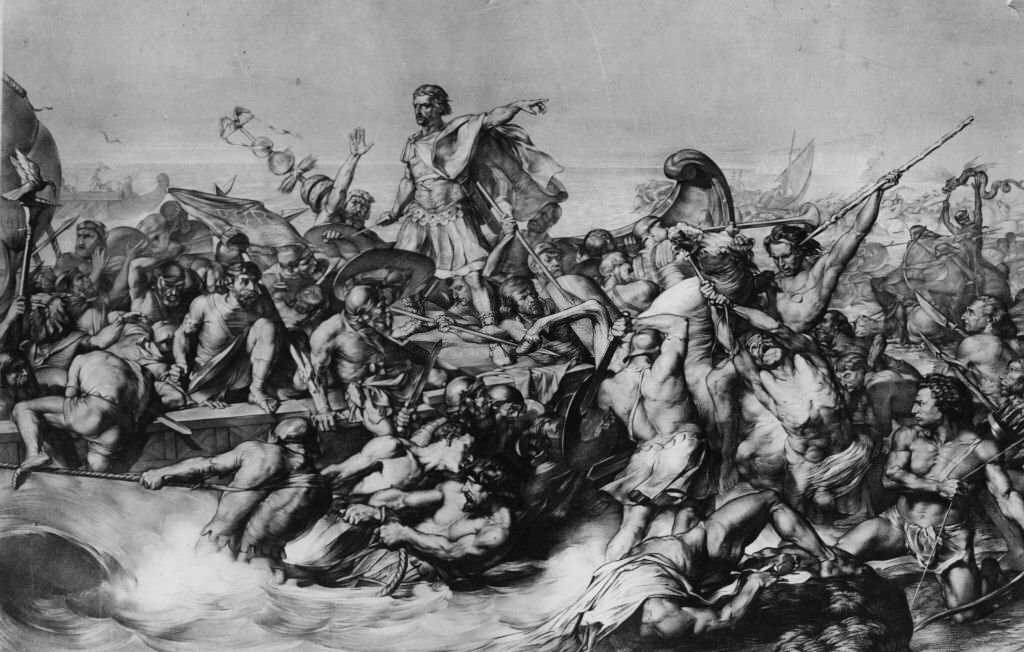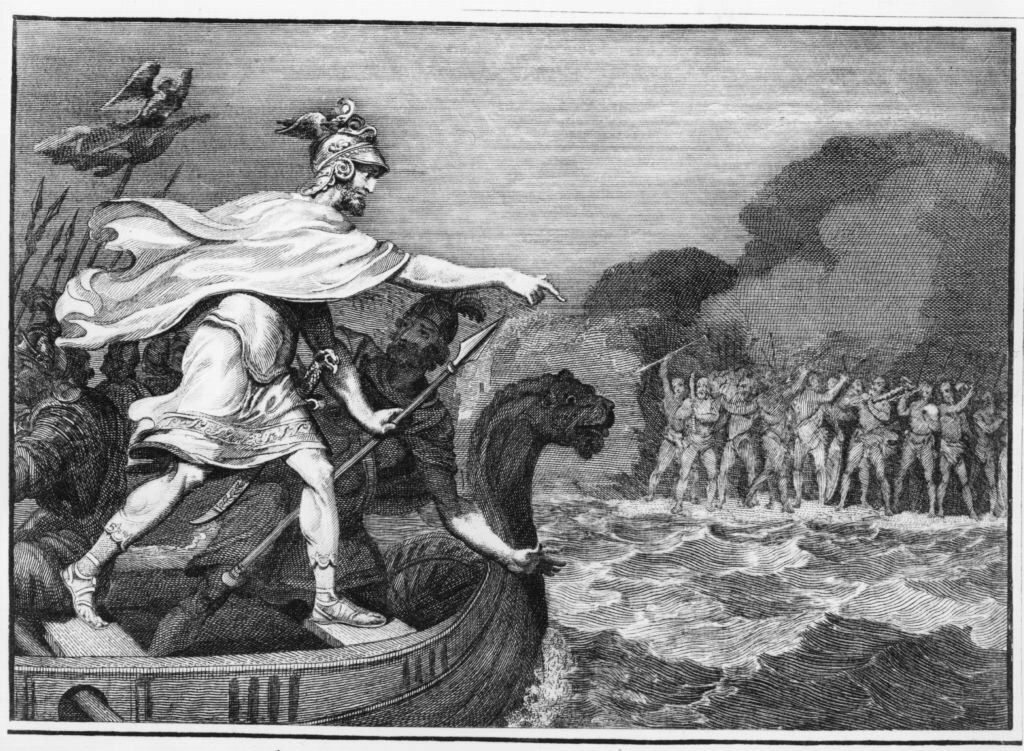Table of Contents
Explore the intriguing question of “How Tall Was Julius Caesar” and unravel the enigmatic stature of the iconic Roman general and statesman.
Julius Caesar was one of the most influential figures in world history. As a Roman general and politician in the 1st century BC, he played a pivotal role in the demise of the Roman Republic and the rise of the Roman Empire. Caesar’s life and legacy have been examined by historians for centuries, sparking debate around many details – including his physical appearance. One question that has long intrigued scholars is: how tall was Julius Caesar?
Ancient sources provide varying accounts of Caesar’s height. In the centuries since his death, experts have attempted to analyze skeletal evidence and artistic depictions to estimate his actual stature. While his height continues to be a source of speculation, most modern historians believe Caesar was of average height for his time – around 5 feet 7 inches or 170 centimeters. Examining the question of Caesar’s height not only reveals details about the man himself but also larger insights about Roman society.
How Tall Was Julius Caesar?
The exact height of Julius Caesar is unknown, as there is no record of his height being measured during his lifetime. However, there are some estimates that suggest he was around 5 feet 7 inches tall. This is based on the average height of Roman men during that time period, as well as on the size of his clothing and armor.
Julius Caesar’s Height in Ancient Sources
Two major ancient Roman sources provide details about Julius Caesar’s appearance – but they seem to contradict each other on the subject of his height. The historian Suetonius, writing in the early 2nd century AD, described Caesar as tall with a fair complexion. In his Lives of the Caesars, Suetonius states:
“He was tall, of a fair complexion, round limbed, rather full-faced, with eyes black and piercing.”
This is in contrast to the biographer Plutarch, writing around the same time, who claims:
“His general appearance was somewhat unprepossessing. He was stocky, had fair skin, and suffered from patches of blemish (vitiligo). His face was prematurely lined…”
Plutarch goes on to say Caesar was “slightly built” and of “average height”. So why do these accounts differ? Some historians posit that Suetonius wanted to emphasize Caesar’s vigor and strength as a leader, so he depicted him as taller. While Plutarch took a more neutral stance. However, both could be unreliable – the ancient writers were born well after Caesar’s death and may have exaggerated details of his appearance.
Modern Estimates of Caesar’s Height
Lacking a confirmed measurement from Caesar’s time, experts have tried to extrapolate his likely height based on skeletal evidence and what is known about the stature of Roman men. Two key pieces of information provide clues:
- Analysis of skeletal remains believed to be Caesar’s show he was probably around 5 feet 7 inches tall. This matches the average height for Roman elites of the period.
- Compared to his political contemporaries like Pompey and Cicero, historical accounts suggest Caesar was of roughly equal height. Pompey is estimated to have been around 5 feet 6 inches tall.
Taking into account both archaeological and literary evidence, most modern historians believe Julius Caesar stood between 5 feet 6 inches and 5 feet 10 inches tall. The most commonly accepted estimate is 5 feet 7 inches or 170 cm – the average height for Roman patrician men of his era. This would make him slightly taller than lower-class Romans, but not remarkably tall by the standards of Mediterranean societies at the time. Read also Darshan Raval height.

Why Caesar’s Height Matters
Julius Caesar’s appearance and physicality were inseparable from his public image. As scholar Mary Beard has noted, “However small (or indeed large) in reality, he was always the tallest in the popular imagination.” Being tall was equated with strength, virility, and leadership in Roman culture. Poets and artists depicting Caesar exaggerated his height to symbolic effect.
How Caesar was viewed by his fellow Romans also shaped his own actions. He was sensitive about early balding and went to efforts to conceal it. As a young man, he aligned himself with the tall and imposing general Marius for prestige. Caesar actively cultivated a lean and vigorous public persona to match ideals of masculine beauty.
So while his true height remains ambiguous, how Caesar was perceived reveals much about his style of leadership and use of propaganda in Ancient Rome. His contested stature left an impression on history.
Did Cleopatra have a child with Julius Caesar?
Yes, Cleopatra, the famous Egyptian queen, did have a child with Julius Caesar, the Roman general and statesman. Their child’s name was Ptolemy XV Philopator Philometor Caesar, but he is more commonly known as Caesarion. He was born in 47 BC and was recognized as the son of Julius Caesar. Caesarion’s birth contributed to the complex web of political alliances and conflicts during the late Roman Republic and the early Roman Empire.
Caesar’s Height Compared to Other Romans
Though perhaps not exceptionally tall, Julius Caesar did measure up well against other leading figures in Roman politics and the later imperial family:
- Compared to his rival Pompey the Great, Caesar appears to have been only slightly shorter at around 5’7″ vs 5’6″. This small edge may have bolstered his image.
- Mark Antony and Augustus were both described as shorter than average. So Caesar would have stood taller than his heir Octavian.
- Interestingly, the first 5 Roman emperors after Caesar averaged only 5’2″ in height – quite short for their era.
- The famed general Marcus Aurelius, who ruled in the 2nd century AD, was unusually tall for a Roman at 5’11”. Caesar did not measure up to this later giant.
So while not freakishly tall, Julius Caesar’s above-average height for a Roman patrician did convey political advantage in his time versus rivals and successors. His stature fit ideals about appearance that influenced his reputation.
Julius Caesar’s Self-Perception
Ancient accounts give a strong impression that Caesar was concerned about his public image and went to great lengths to project an imposing, vigorous persona to match ideals of manliness. Some key examples:
- Caesar tried to disguise early male pattern baldness by combing what was left of his hair forward over his head. The laurel wreath he wore also helped conceal hair loss.
- He made public speeches from elevated platforms in the forum so he would appear taller.
- Caesar avoided wearing richly decorated cloaks or jewelry that might make him seem less masculine.
- His choice of younger military officers as supporters (like Mark Antony) may have been calculated to contrast with his senior status for visual impact.
So while not extremely tall, Julius Caesar does appear to have carefully cultivated his physical presentation. His understanding of political optics contributed to his iconic public image through the savvy projection of vigor and virility.
Height Symbolism in Roman Politics
Ideals of height and physicality were deeply embedded in Roman culture and politics:
- Lofty stature in leaders was seen as a sign of strength, vitality, and authority. By contrast, shortness could imply weakness.
- Roman rhetoric often drew comparisons between height and power – the phrase “looking down on” inferiors recurs in speeches by Caesar and others.
- Poets equated Caesar’s elevation to power with literal physical height. One wrote he could “walk the sky” and another described Caesar looking “down upon the captured world.”
- After Caesar’s murder, Antony repeatedly emphasized his tall stature in speeches, recognizing public respect for height.
- Augustus limited portraits showing “short, sorrowful senators” next to the tall Caesar for symbolic impact.
So whether factual or not, the notion of an imposing tall Caesar served both political propaganda and public expectations in Rome.
Caesar’s Height in Art and Literature
The contested question of Julius Caesar’s height impacted his depictions in art and storytelling through the ages:
- Statues and busts created during Caesar’s life show an imposing, muscular figure, likely exaggerating his height and physique.
- Renaissance artists tended to portray Caesar as a towering figure, with small soldiers and citizens looking up at him.
- By the 18th century, historical painters like Jean-Léon Gérôme depicted a slight, fragile Caesar to show flaws.
- Modern films about ancient Rome vary wildly in showing Caesar as tall (Mason in Julius Caesar 1953) or below average (Pizzorno in Cleopatra 1963).
- In the Asterix comics, the puny dialogue between Caesar and the tall Gauls humorously plays on his short stature.
So debates over Julius Caesar’s height have directly shaped his representation across 2,000 years of art and literature – sometimes revealing more about the era’s ideals than factual accuracy.
Separating Myth from Reality
In separating fact from fiction regarding his appearance, a few key points stand out:
- The notion of Julius Caesar as very tall emerged after his death and owes more to symbolism and propaganda than reality.
- A height of around 5 feet 7 inches or 170 cm matches archaeological and literary evidence most closely.
- Efforts to conceal early balding reveal his understanding of appearance management for power.
- His actual height was likely average, but Caesar cultivated a grander public image to convey strength as a leader.
- Over time, his representation in art stretched even further from reality for symbolic effect.
So while Caesar was not the giant of myth, the debate over his stature reveals the deeper connection between appearance, perception, and political authority in Roman society.
Final Words
In the end, Julius Caesar’s exact height eludes definitive proof but was likely around 5 feet 7 inches tall based on available information. The symbolic connections between stature, strength, and power caused his height to be exaggerated at some points and minimized at others throughout history for artistic and political purposes. Debates around this relatively minor detail illustrate the outsized place Caesar occupied in the Roman psyche, as both a towering legend and flawed mortal human. Getting the full measure of this contradictory leader remains a challenge.
People also ask
How Tall Was Julius Caesar?
Julius Caesar is 5 feet 7 inches tall.
Q: Could Caesar’s diseases and conditions have affected his height?
A: It’s possible – Caesar reportedly suffered from conditions like epilepsy and malaria which can impact development if acquired in childhood. He lived to age 55, suggesting he was fairly healthy overall. But disease theoretically could have slightly stunted his growth compared to genetic potential.
Q: Were any Roman Emperors shorter than Julius Caesar?
A: Yes – many were shorter than Caesar’s estimated 5 feet 7 inches. Augustus and Claudius were both around 5 feet 4 inches. Nero and Vitellius were only 5 feet. At 5 feet 2 inches, Otho was the shortest of all early Roman emperors. So Caesar exceeded imperial height standards.
Q: How did Caesar’s height factor into his relationship with Cleopatra?
A: Cleopatra was renowned for her short stature and has been estimated around 5 feet 3 inches tall. So Caesar would have stood 4-5 inches taller. This moderate edge may have reinforced his authoritative position in their alliance symbolically and physically.
Q: Could Caesar actually have been much shorter or taller than presumed?
A: It’s possible but unlikely based on the evidence. Contemporary Roman men of elite status ranged between 5’5″ to 6’0″ – extreme heights outside that range probably would have drawn more commentary. Unless lost artifacts emerge, a height of 5’6″ to 5’10” for Caesar remains the best scholarly estimate.




